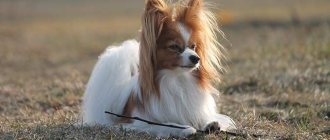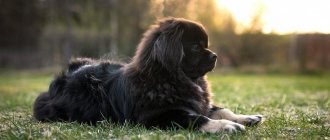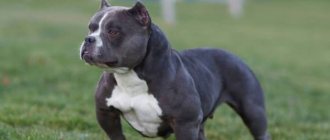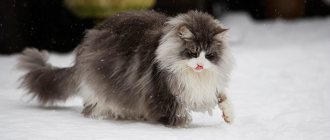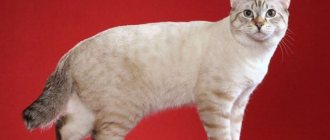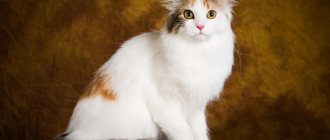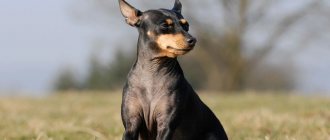Brief characteristics of the dog
- Other possible names: Irish Water Spaniel, Whiptail, Rat Tail Spaniel, Shannon Spaniel, Long Tail Spaniel, Rat Tail Spaniel, Shannon Spaniel, Bog Dog.
- Adult height: from 56 to 61 cm.
- Weight: from 25 to 30 kg.
- Characteristic color: brown or liver.
- Coat length: medium in the form of thick curls.
- Life expectancy: 12-14 years.
- Advantages of the breed: smart, attentive, agile, excellent swimmers, do not shed.
- Difficulties of the breed: requires good training, requires coat care, needs space and movement.
- Average price: $600-$800.
Description and characteristics
Life expectancy is 10 – 15 years.
Currently popular in the United States of America, Ireland and the UK.
Currently, this is the largest representative among spaniels. His height ranges from 56 to 61 centimeters, and his weight is 25 – 30 kilograms.
Thanks to breeders, the breed has a number of characteristics that only it possesses:
- Waterproof thick wool;
- Small webbing between the toes ;
- The tail is similar in appearance to a rat's, but for the dog it serves as a steering wheel when swimming. At the base of the tail the hair is curly, and the closer to the tip, the harder and straighter the hair becomes.
The appearance of the Irish Water Spaniel attracts the attention of others. The body, as described, is almost regular square in shape.
At its core, a representative of the breed should look like a powerful, hardy representative of the canine family with strong bones. The color is predominantly brown with a variation of different shades.
Representatives of the Irish Water Spaniel breed do not shed.
Representatives of the Irish Water Spaniel breed do not shed
History of the origin of the breed
The Irish Water Spaniel is the largest and oldest species of all spaniels. According to experts, who refer to the remains found during excavations in the area of Lake Lagore, such dogs existed back in the 7th-8th centuries. In the south of Ireland in the second half of the 12th century, they could often be found in the area of the Shannon River, for which they received the name Shannon spaniels, as well as water spaniels.
According to surviving documents, in 1598, a certain Sir Robert Cecil made a gift to the King of France in the form of several such dogs. And in 1607, the first description of a spaniel appeared, loving water and covered with long, curly hair and a bare tail, for which the dogs were nicknamed rat-tailed or long-tailed spaniels. There is even a legend about the tail that St. Patrick was a great joker and once moved a dog’s hair from his tail to his head.
In the 19th century, dog breeding began to actively develop in Europe, and many breeds were subjected to selection. The water spaniel, which was crossed with a poodle, an Irish setter and a curly-haired retriever, also got it.
Since 1859, the Irish Water Spaniel breed began its exhibition career. True, the first prize was won in 1866. But the official standard was released only in 1990, with amendments in 2001.
The breed is recognized by many leading international Clubs and Federations, including FCI. And the Irish Water Spaniel is most widespread and popular in Ireland and England, as well as in the USA, where these dogs became the ancestors of the American Water Spaniels.
Origin of the Irish Water Spaniel breed
The true origins of Irish Water Spaniels are unknown.
But most likely, the breed comes from dogs that lived a long time ago in Persia and ended up in Ireland through Spain. It is possible that the ancestors of the current breed are local Irish dogs. The first Irish mention of a water dog hunting waterfowl dates back to 1600. It is known that dogs with waterproof fur were used in Ireland even before the advent of bird hunting rifles.
In the second half of the 19th century, they received a lot of attention at exhibitions.
In 1890, a club was organized to raise the profile of the breed.
Each of us associates the spaniel with small dogs that are very active, cheerful and energetic. Representatives of spaniels are especially known to hunters. But from the entire spectrum of represented subspecies of the breed, the Irish Water Spaniel or Rat-Tail Dog stands out.
Currently the origin is unknown. But there are several opinions about where curly spaniels came from:
- One unsubstantiated rumor is that the variety was originally created by crossing Portuguese water dogs brought to Ireland.
- Some place significant emphasis on the fact that the ancestors of the Irish Water Spaniels were the once existing Water Spaniels from England.
But in Ireland, during archaeological excavations on Lake Lagore, the remains of a dog were discovered, which confirmed a different theory. Presumably they existed as early as the 6th – 7th centuries BC. It was this discovery that led to the fact that no one can name the direct ancestors of the Irish Water Spaniel.
Now scientists and specialists in the field of cynology can only make their own assumptions, and then based only on the behavioral factors of Irish Water Spaniels.
Scientists believe that the progenitor could be a poodle or a barbet
In their opinion, the ancestors could be representatives of the following breeds:
- Poodle;
- Barbet;
- And the extinct breeds of English, Northern and Southern Water Spaniels.
This breed is a mystery. But if you study it in more detail, you can reveal some of the mystery of their origin.
They became popular in the 12th century in the south of Ireland near Lake Shannon. The additional name of the breed is Shannon Spaniels. They were used only in hunting, as they have considerable strength and amazing endurance.
In 1859, the breed was recognized by the world and began its exhibition career.
Description of the nature of the breed
Resembling a poodle in appearance, Irish water dogs are just as cheerful and playful . But they are like that only in relation to those they know. Dogs always look at strangers with suspicion and readiness to defend the house and its inhabitants .
In normal circumstances, they are not at all prone to aggression , but on the contrary, they are the kindest and most peaceful dogs. They will happily play with the child , but a small child may, after playing too much, be accidentally pushed.
for them to be on the move . Moreover, they are very hardy , since they can wander for 15 hours with their owner in search of game. For this reason, they are not entirely suitable for city life. Space and the ability to swim are important to them .
These spaniels learn quite quickly , but can sometimes be stubborn . But with proper training and patience on the part of the owners, they quickly master commands and turn into obedient pets.
Description of the breed
The Field Spaniel is a stately dog with a regular, harmonious physique, looking fit, strong and healthy.
The head is beautifully lined with a well-developed skull and a long, thin muzzle . The eyes are medium in size, usually hazel or reddish-brown in color.
The ears are of medium length and width, set below the eye line, falling in folds.
The neck is elongated, but at the same time quite strong, with well-developed muscles.
The body is moderately strong, with a deep but not wide chest and a level topline.
The forelimbs are straight and parallel . The hindquarters are muscular, strong and strong.
The tail is set rather low, never rising above the line of the back.
The coat is shiny and silky, can be either smooth or slightly wavy, but not curly. There are beautiful feathers on the chest, belly and back of the limbs, and the tail is also well furred.
Color: The most typical coat colors are brown, black, as well as black-roan and brown-roan . In addition, these same colors with the addition of white markings, as well as red and white, are considered acceptable.
The Field's gaze should express calmness and at the same time be friendly and a little melancholy.
How to choose a puppy
The breed has one distinctive feature, which makes it difficult to confuse it with someone else - it is a bare, rat-like tail, which serves the dog instead of a rudder when swimming .
But since this is a rare breed, puppies are purchased mainly from nurseries or from private breeders who directly breed this breed and monitor its purity. And this is a big plus, since you can be sure that you will not get a completely different dog, which at best will turn out to be a poodle.
As a rule, all breeders are members of kennel clubs, under whose supervision sometimes even dog matings occur. And they may not recognize the litter if they find flaws in the puppies.
Dog names
Puppies that are purchased in nurseries already have their names entered in the metrics at the time of purchase, and when they are exchanged they will be entered in the pedigrees. If there are no puppies available, and you stand in line for a pet, then you have the opportunity to come up with a nickname yourself . Here are some name options that may help you in this matter:
- for males: Anwar, Celt, Burton, Doubloon, Kaiser, Curlin, Larson, Roger, Ronnie, Telmar and so on;
- for females: Atika, Bayra, Dina, Katrice, Lala, Maggie, Oji, Sammy, Tina and others.
Care and maintenance
The curly coat of the water spaniel requires careful and even painstaking care . In order for such a dog to have the proper appearance, it needs to separate the curls , which often get tangled together. But such wool also has its own dignity.
These dogs are suitable for those who suffer from allergies as they do not shed. Fallen hairs are tightly held in curls, and do not float in the air and do not lie on carpets and upholstered furniture.
For beauty, you can comb the shaggy cap. When caring for the fur, do not forget about the fleas that tend to live in it, and, if necessary, remove them using convenient methods. Spaniel ears require special attention. They need to be inspected and cleaned frequently.
For such an active and energetic dog, a country house . And if it is located near a reservoir, then such conditions are generally ideal. Water spaniels are named for a reason. They simply love to swim , and hunting on water is their profession . These instincts must be supported and the dog must be allowed to practice its hunting skills as often as possible by throwing objects into the water and imitating ducks.
If you brought such a spaniel into an apartment, then first of all teach him to go outside when he needs to. And also provide your pet with long, daily walks. It is better to let your dog off the leash in a deserted place and away from cars, so that during games it does not accidentally jump out onto the road.
Possible health problems
Athletes such as water spaniels are distinguished by good health . True, sometimes they still experience dysplasia and ear diseases.
To avoid problems with joints, during the period of active growth, do not overload the dog , and also make sure that it does not gain weight, and control the amount of food . Symptoms of this disease are lameness and pain when walking. And in order to avoid problems with your ears, it is enough to clean them regularly. If a dog's ears hurt, it starts shaking them and tries to scratch them, leaning towards the problematic side.
Infectious diseases , which affect all dogs of any breed without exception, can have serious consequences There is a good way to prevent and reduce complications, which is called vaccination. And of course, regularly carry out anthelmintic measures. And also walk your dog more in the fresh air and watch its diet.
Nutrition for puppy and adult dog
There are several basic rules when feeding any dog: do not give fatty, sweet or smoked foods, and also try to avoid baked goods.
Proper nutrition consists of meat products (chicken, beef, turkey), sea fish, cereals and vegetables. It is useful to include eggs and dairy products in your puppy's diet, but only without preservatives, additives and sugar. You need to feed your puppy three to five times a day, depending on its age. For an adult dog, two meals a day .
To make it convenient for your pet to eat, use a stand, preferably one that can be adjusted in height, since the bowls should be at the same level as the chest. 20 minutes after feeding, remove the food bowl, even if the dog has not finished eating . And the second bowl should always be filled with clean water.
Rules of maintenance and care
A representative of this breed perfectly regulates body temperature, and increased activity requires free movement over a very large area, so it is best to keep the dog outside. Chain tying is not suitable as it is very energetic and can cause harm to itself.
The best place for keeping would be a limited and spacious area, or a spacious enclosure. The ideal place for keeping it would be a private house near a pond.
The coat requires special care, as the coat is curly and very soft. When washing, the use of additional products (conditioners) is required to simplify further care. It is necessary to comb regularly to avoid the appearance of tangles.
The Irish Water Spaniel can be trimmed. It is best to do this in specialized salons or nurseries, where the standards for grooming this particular breed are known. Since violation of standards is not allowed.
It is worth mentioning separately about feeding representatives of this breed.
Proper nutrition includes:
- Meat products such as chicken, veal/beef.
- Sea fish.
- Porridge.
You can also add vegetables, eggs and dairy products. Sugar is contraindicated.
Puppies need to be fed 4 – 5 times a day. The number of feedings directly depends on the age of the dog. It is enough to feed an adult twice a day. When breastfeeding, additional vitamins and minerals are required.
You can also simplify feeding by using special food for active and active dogs.
When feeding dogs chicken and turkey, you should avoid introducing bones into the food. Since the dog can chew them and injure the digestive tract and stomach with fragments of bones. Which can lead to the death of the animal.
You need to walk your Irish Water Spaniel two to three times a day. The duration of the walk is an hour to an hour and a half. For walking, it is best to choose places away from roadways and large crowds of people, since these dogs are very freedom-loving and need to run around a lot.
Briefly about training
Training a Water Spaniel is usually not difficult. But you will still need patience and some rigor , as these smart and smart dogs can sometimes be stubborn .
From the first days, teach your dog that you are the leader , and you need to obey you unquestioningly. The best motivation for obedience and training is praise and a small piece of treat.
To prevent your pet from growing up fearful and shy, he needs early socialization (familiarity with the outside world). And also in the learning process you cannot use force, shouting and physical punishment .
Description
The low popularity of the breed led to the fact that it was rarely crossed with others and it has remained unchanged since its origin.
They are medium-sized dogs with curly hair. Color: liver, brown, chocolate. The outer shirt protects the dog from cold water and brush, and the undercoat helps keep the dog warm.
The coat is covered with skin secretions that help the dog stay dry, but have a characteristic dog smell.
The average height at the withers is 38-46 cm, the average weight is 15 kg (varies from 11 to 20 kg).
Outwardly, they are similar to Irish water spaniels, but unlike the latter they are not as large (the height of the Irish water spaniel is up to 61 cm, weight up to 30 kg).
Unlike other Spaniel breeds, the American Water Spaniel does not differentiate between working and show dogs. Moreover, these are mainly working dogs, which are still successfully used in hunting to this day.
The breed standard stipulates that the eye color should be in harmony with the coat color and should not be yellow.
Advantages and disadvantages
Irish Water Spaniels are energetic and active dogs that love to swim. They are also excellent hunters on the water. They have a cheerful and balanced character . But if danger threatens, then in self-defense they can show aggression.
Such dogs rarely give voice and simply do not bark. If you hear them barking, then you should pay attention .
They are large, curly-haired family pets who get along well with children and can coexist peacefully with other pets. They are playful and friendly, but can be shy and meek in unfamiliar surroundings. To avoid this, you need to start getting acquainted with the outside world as early as possible. Moreover, water spaniels really need daily, long walks, preferably two or three times a day.
They are generally very hardy and can wander with you for hours or accompany you on a bike ride or jog. For such active dogs, movement generally means a lot, so the breed is not suitable for homebodies and those who like to lie on the couch .
It is better to have such a dog in a country house and close to bodies of water , since these spaniels are big fans of swimming, and they need water training. This way they can maintain their skills as aquatic hunter.
They are very smart and quick to learn. But still, due to their stubbornness, some difficulties may arise, which your patience and correctly chosen tactics will help solve.
Another difficulty in keeping a water spaniel is caring for its curls . It requires good skills and qualifications.
With proper training and care, as well as showing love and care to your pet, in return you will receive a good friend and companion with funny curls.
Appearance and character
The Irish Spaniel is the largest representative of its species: the weight of males can reach 26 kilograms and height – 61 cm. The dog’s body is strong and muscular, covered with thick curly hair of chocolate brown color. The hair is longer on the head and chest. The tail is a bit like a rat's - thin, cone-shaped, with short hair. The muzzle is elongated, with long hanging ears and a large nose.
Representatives of this breed are distinguished by an absolute lack of aggression towards people and other pets. They are strongly attached to their owner and love to follow their tail. It is necessary to pay a lot of attention to them, otherwise the dog may become sad and even depressed. Shy with strangers, but sociable and playful around the family, the spaniel gets along well with children and will never harm them. Easy to learn. Harsh educational methods, rudeness and shouting are unacceptable due to their soft and touchy nature.
Owner reviews
Novel:
My James will soon be seven years old. My yard borders a river. Just as you can’t pull a child out of the water, neither can he. Sometimes you even have to be locked in a house or enclosure. Everything that floats past drags home. The dog is very smart, but a little wayward. Yes, and you have to tinker with wool periodically. You can’t just pick it up and comb it, you have to sit and untangle it. But basically I’m completely satisfied.
Anton:
My wife liked the look of the dog. We read about the breed, and it seems like nothing. We had to wait in line at the nursery, as it turned out to be a rare breed. As for me, the dog is simply wonderful. Lively, cheerful and quite smart. We often run with him and the kids to the lake. What kind of things do they do in water? In general, I noticed that the dog treats children very well. And he listens to them more than to my wife and me. By the way, she was less fortunate, and apparently she was a little disappointed. She has to tinker with his fur because she chose this breed. He says that it would be better if he were all like a tail. It’s good that the kids have started helping her lately.
Tell us about your curly pets. And also share your reviews about this rare breed of Irish Water Spaniel.
Share
Leave a review
History of the breed
This breed is one of the symbols of the state of Wisconsin and it is not surprising that most of its history is connected with it. In general, there are several theories about the origin of the breed and few facts. The most popular theory is that...
The American Water Spaniel appeared in the mid-19th century, in the delta of the Fox River and its tributary Wolf River. At that time, waterfowl hunting was an important source of food and hunters needed a dog to help them in this hunt.
They needed a dog that could track and retrieve prey, but was also compact enough to fit in small boats. In addition, its coat had to be long enough to protect the dog from cold water, as the weather in the state can be quite harsh.
It is unknown what breeds were used for breeding. It is believed that the English water spaniel, Irish water spaniel, curly-coated retriever, aboriginal mongrel dogs and other types of spaniels.
The result was a small dog (up to 18 kg) with brown hair. At first the breed was called the brown spaniel. Its thick fur reliably protected it from cold winds and icy water, which made it possible to hunt at any time of the year.
However, time passed and with it the lifestyle changed. There was no longer a need to hunt birds for food; in addition, other breeds of dogs came to the region. These were larger setters, pointers and other spaniel breeds. This caused the American Water Spaniel's popularity to decline significantly. And along with their popularity, the number of these dogs has also decreased.
The breed was saved thanks to the efforts of one person - Dr. Fred J. Pfeifer, from New London in Wisconsin. Pfeiffer was the first to note that the American Water Spaniel is a unique breed that is under threat. In an effort to preserve it, he created Wolf River Kennel, the first breed kennel.
At some point, the number of dogs in his kennel reached 132 and he began selling puppies to hunters in other states. The price for puppies reached $25 for a boy and $20 for a girl. The demand for puppies was stable and he sold up to 100 puppies a year.
His efforts led to the breed being recognized by the United Kennel Club (UKC) in 1920, and his own dog, “Curly Pfeifer,” was the first officially registered dog of the breed. Work to popularize and recognize the breed continued and in 1940 it was recognized by the American Kennel Club (AKC).
Despite the fact that in 1985 the breed became one of the symbols of the state of Wisconsin, it remains little popular outside the United States. And there are not so many of them in their homeland. For example, in 2010 it was ranked 143rd in popularity in the United States, and there were only 167 breeds on the list.
